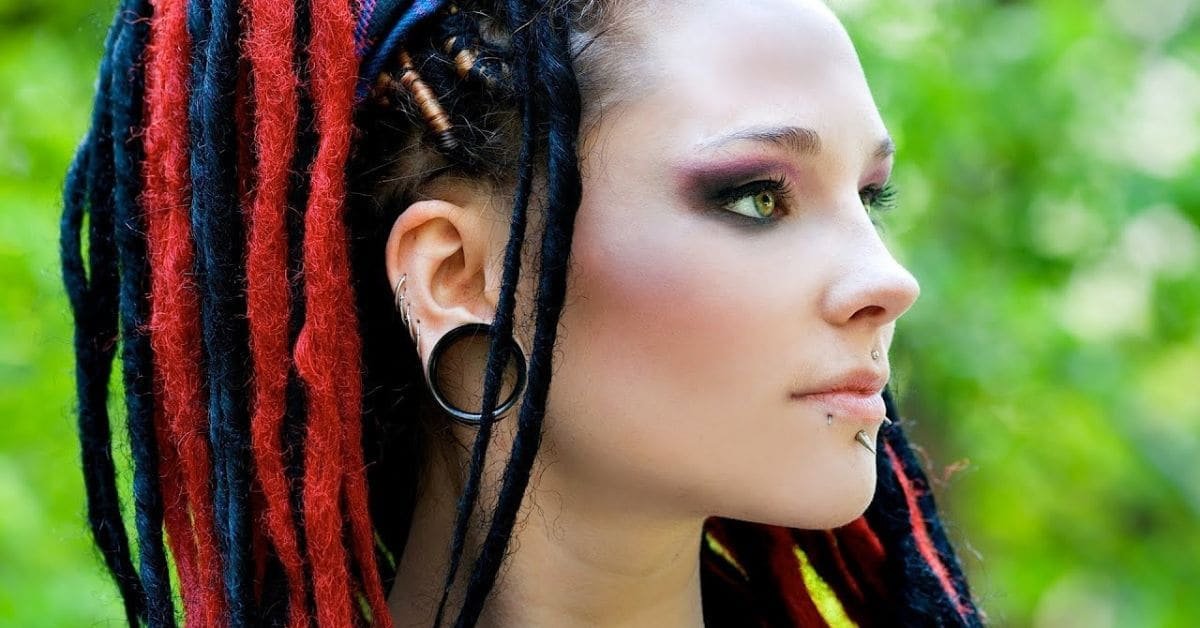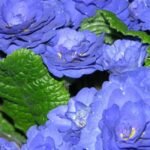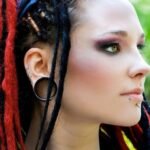Introduction
Dreadlocks, often referred to simply as “dreads,” are one of the most distinctive and ancient hairstyles in the world. This unique and bold look, which involves the matting or braiding of hair into rope-like strands, has a rich history and deep cultural significance.
While dreadlocks are often associated with specific subcultures, they have been worn by people across various societies for thousands of years. From their spiritual and cultural meanings to the techniques and maintenance required, this article will provide a comprehensive look into the world of dreadlocks.
What Are Dreadlocks?
Dreadlocks are formed when hair is allowed to mat and tangle naturally without being combed or brushed. Over time, the individual strands of hair interlock and form locks that vary in size, shape, and texture. While some people choose to create their dreads through various methods such as twisting, backcombing, or crocheting, others allow their hair to form dreads over time naturally.
The process can take weeks, months, or even years, depending on the length of the hair, the technique used, and how tightly the locks are formed.
Though dreads are often seen as a hairstyle, they are much more than just an aesthetic choice for many people. For some, dreadlocks represent cultural identity, spiritual beliefs, or a form of self-expression.
History of Dreadlocks
The origin of dreadlocks dates back thousands of years and spans various cultures around the globe. Dreadlocks were not a trend or a modern fashion choice but a symbol with deep historical and spiritual roots.
Ancient Civilizations
Various ancient civilizations have worn dreadlocks throughout history. Some of the earliest depictions can be found in ancient Egypt, where both men and women of all social classes wore them. In ancient Egyptian culture, dreadlocks were seen as a symbol of power and prestige, worn by gods and pharaohs and also by warriors and priests.
In Hinduism, dreadlocks are deeply connected with the God Shiva. Known as “jata,” the dreadlocks worn by Shiva are considered a sacred representation of God’s power and mysticism.
In India, the practice of wearing dreadlocks has been around for centuries and continues to be a spiritual tradition. The Sadhus, or holy men, are known for wearing dreadlocks as a way of renouncing worldly desires and achieving enlightenment.
Various ethnic groups in Africa have worn dreadlocks for centuries, and their significance varies from one culture to another. Among the Maasai people of East Africa, for example, dreadlocks are worn by warriors and signify strength and bravery. Similarly, the Rastafari movement, which emerged in Jamaica in the 1930s, adopted dreadlocks as a symbol of resistance, spiritual awakening, and pride in African heritage.
The Rastafarian Influence
One of the most well-known and widely recognized associations with dreadlocks in modern times comes from the Rastafarian movement. Originating in Jamaica in the 1930s, Rastafarians adopted dreadlocks as a visual expression of their spiritual beliefs and resistance to oppression.
For Rastafarians, dreadlocks symbolize the Lion of Judah, representing strength, courage, and the biblical figure Haile Selassie I, whom they regard as the earthly manifestation of God. Dreadlocks also represent a rejection of European colonialism and the adoption of African identity, culture, and spirituality.
The global spread of the Rastafarian movement, especially in the 1960s and 1970s, through the influence of figures like Bob Marley, played a significant role in popularizing dreadlocks as a symbol of counterculture and freedom. The Rastafarian ideology emphasized the connection between the spiritual, natural, and political worlds, and dreadlocks became an essential part of this expression.
Dreadlocks and Cultural Significance

Throughout history and across cultures, dreadlocks have held various meanings and purposes beyond their visual appearance. Here are some of the cultural and spiritual significances of dreadlocks:
Identity and Pride
For many people, dreadlocks are a symbol of personal identity and cultural pride. For individuals of African descent, dreadlocks can be a way of embracing their heritage, rejecting societal beauty standards, and reclaiming African traditions. The hairstyle is a powerful statement of defiance against cultural assimilation and the imposition of European beauty ideals that have long been dominant in the West.
Spiritual Connection
In many cultures, dreadlocks are not just a hairstyle but a symbol of spiritual connection. In Hinduism, the jata worn by Sadhus represents renunciation of material desires and a deep connection to the divine. Similarly, the Rastafarian belief system sees dreadlocks as a symbol of divine power and a link to the sacred.
Resistance and Rebellion
Throughout history, dreadlocks have also been associated with resistance movements. In Jamaica, dreadlocks became a symbol of resistance to colonial powers, with the Rastafarian movement using the hairstyle as an expression of defiance and pride. In the 1960s and 1970s, during the civil rights movement and the countercultural revolution, many young people adopted dreadlocks as a symbol of rebellion against the status quo and mainstream culture.
Creating and Maintaining Dreadlocks
The process of creating and maintaining dreadlocks can vary widely depending on the desired style and individual preferences. Here are some key methods and tips for getting and keeping dreads:
Methods of Creating Dreadlocks
- Natural/Freeform Dreadlocks: This is the most organic method, where hair is left to mat and form into locks naturally over time. This process can take months or even years and requires patience as the hair gradually locks without any interference.
- Twist and Rip: In this method, the hair is sectioned, twisted, and then gently ripped apart to encourage the formation of knots and tangles.
- Backcombing: This method involves combing the hair backwards to create knots, which are then rolled into dreadlocks.
- Crochet Method: A more precise method where a crochet hook is used to pull loose hairs into the existing dreadlock, tightening the locks and ensuring they stay intact.
Caring for Dreadlocks
Proper maintenance of dreadlocks is essential to ensure they remain healthy and look their best. Here are some tips for keeping your dreads clean and well-maintained:
- Washing: Dreadlocks need to be washed just like any other hairstyle, but it’s essential to use a residue-free shampoo to prevent buildup in the locks. It is generally recommended that you wash your dreads every 1-2 weeks.
- Drying: After washing, it’s essential to dry dreadlocks thoroughly to prevent mildew or odour. You can air dry them or use a blow dryer, ensuring the roots and inside of the dreads are thoroughly dried.
- Retwisting: To keep the dreadlocks tight and neat, the roots may need to be retwisted every few weeks. This can be done by hand or with the help of a stylist specializing in dreadlocks.
- Avoiding Buildup: Over time, products like oils, conditioners, or gels can build up in dreadlocks and cause them to lose their shape or smell. It’s important to use minimal products and regularly wash the dreads to keep them clean and healthy.
Conclusion
Dreadlocks are more than just a hairstyle. They are a powerful symbol of cultural identity, spiritual beliefs, and personal expression. From their ancient origins in Egypt and India to their modern associations with the Rastafarian movement and global countercultures, dreadlocks have remained a profound and enduring hairstyle.
Whether worn as a symbol of heritage, spirituality, or rebellion, dreadlocks continue to inspire and empower people around the world. Maintaining this hairstyle requires patience, care, and dedication, but for many, the rewards are both personal and profound.
Latest posts






